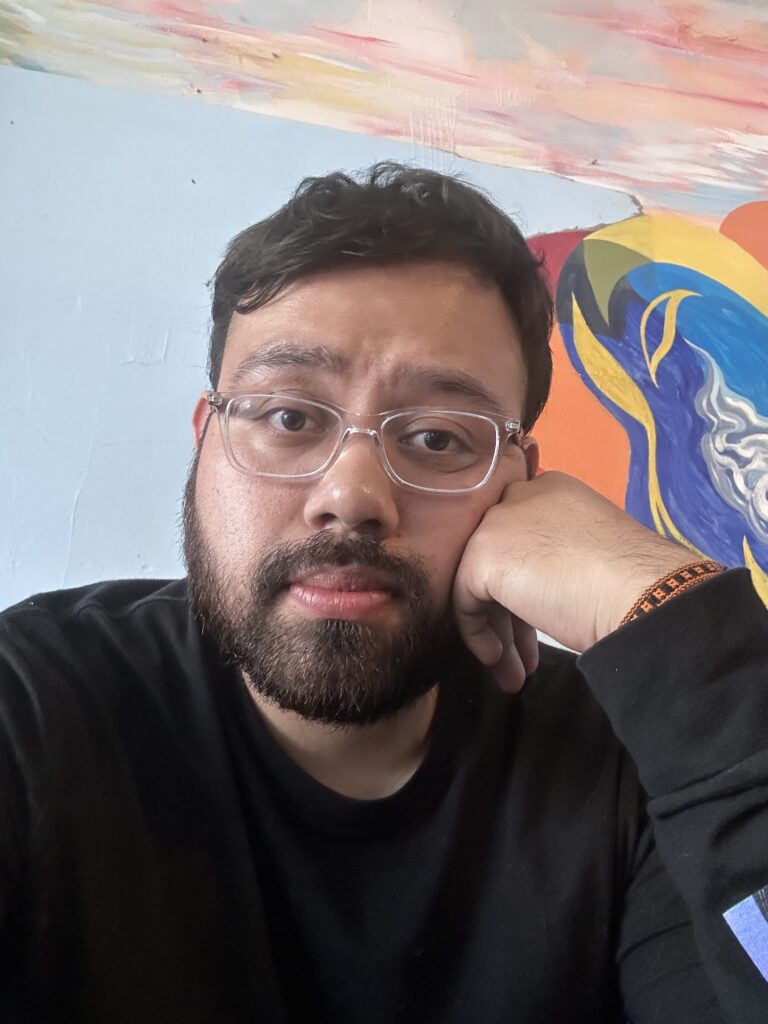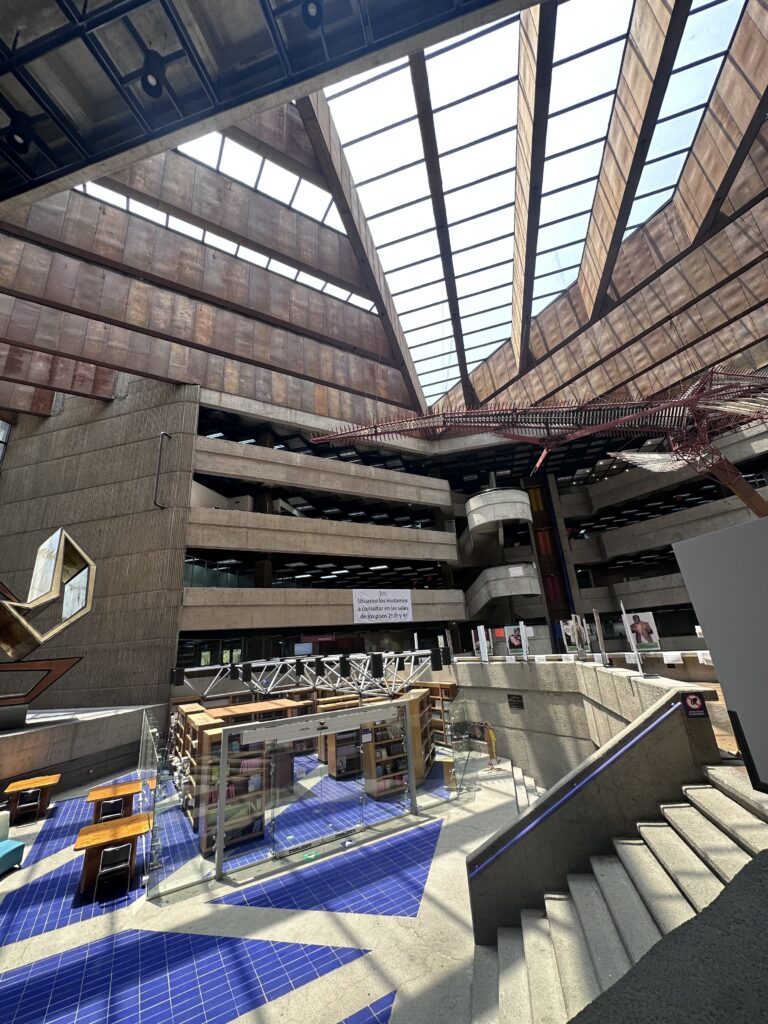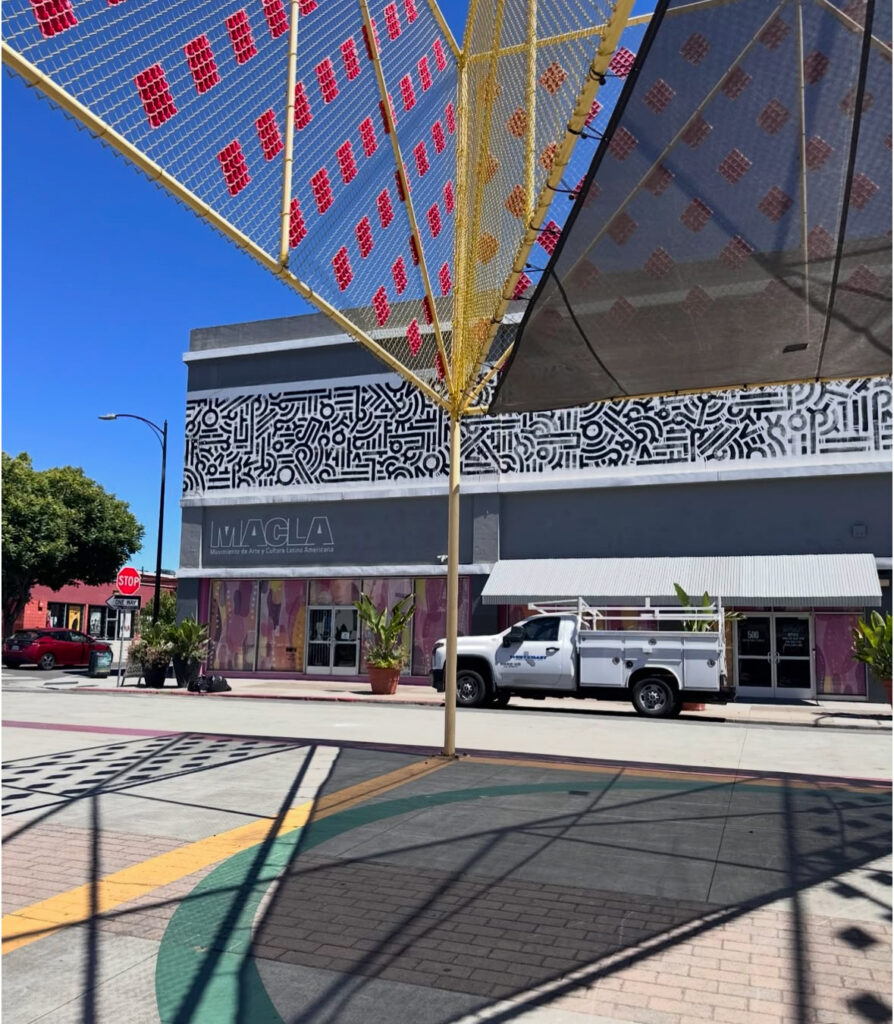Gradute Student Profile: Brian Edwin Rivera Hernandez
Brian Edwin Rivera Hernandez is a third-year Literature Ph.D. student, and has been a part of The Humanities Institute’s 2022 Graduate Student Success Program, the 2023 Summer Pathways Fellowship, and the 2024 THI Graduate Public Fellows Program. Through these fellowships, Hernandez worked with the Movimiento de Arte y Cultura Latino Americana and conducted archival research. In 2024-2025, he also received the Publicly Active Graduate Education Fellowship with Imagining America. We caught up with Brian to learn more about his experiences pursuing these exciting opportunities.
Hi Brian! Thank you for talking to us today. First, can you give us a brief introduction to your research?

Thank you for giving me this space to share my experiences! My research is on contemporary Mexican literature and culture. I’m interested in how water is represented in Mexican cultural production, the different ways by which these representations help us make sense of the climate crisis, how they reveal the shortcomings of developmentalist and extractivist projects, and how they can help us reimagine our connection to water as more than just a substance to be consumed but as a non-human entity.
This sounds like such important work. What were some of the reasons you were drawn to this subject?
I grew up in a small town in the Mexican state of Oaxaca. Thankfully, my town has plenty of natural springs, so we hardly ever struggled with water access. That was not the case in the cities. I remember going to the city of Oaxaca or Mexico City and being told to be very mindful of the water that I used when bathing or other activities. This was because the family members I stayed with only had access to running water once or twice a week. As is common in Mexico, houses often use water storage tanks which get refilled whenever water is available. After moving to the U.S. and growing up in Los Angeles, despite always having continuous access to water, I continued to be mindful of how scarce it could be. It wasn’t until starting my PhD, however, that I began to think about the extent to which Mexican communities, primarily low-income and Indigenous ones, had disproportionate access to water and were often under threat from extractivist and developmentalist projects that aim to dispossess these communities of either land or their access to water. I became interested in how these groups mobilize art/film/literature to advocate for themselves whilst also helping us imagine alternative ways of relating to water and the natural world.
We’d love to hear more about your trip to Mexico in 2023 as a THI Summer Pathways Fellow. What were the archives like, and what did you learn from this experience?
I was very fortunate to spend three weeks in Mexico City, where I frequented the Mexican National Archives and the National Library of Mexico.

The latter is located inside UNAM, the National Autonomous University of Mexico, which happens to be not only one of Mexico’s top universities but also boasts an ecological reserve, a couple of museums, a sculpture garden, a myriad of beautiful murals, and which has a long history of student political movement, something that was very palpable in the campus. I would arrive at the archives in the morning, take a two-hour lunch where I’d grab some awesome street food, tour the campus, and then get a couple more hours of archives in. The National Library’s architecture is amazing and has some great programming that I was privy to when I would visit.
I think the best thing about getting to visit the archives, and mind you this was my first time being in an archive, was how they teleported me to the past. When reading any artifact, and the more I engaged with them–I was looking at post-Mexican Revolution materials–the more I got to see the prevalent socio-political narratives, and trace movements or ideas whose development can still be observed today. For a time, one can almost feel as if those materials are contemporary, and by engaging with them, the time from whence they come is almost palpable.
You have continued to conduct archival work as a THI Public Fellow and last summer you partnered with the Movimiento de Arte y Cultura Latino Americana. We’d love to learn a bit more about the organization. What kind of work do they focus on, and what was your role?
Yes, last summer, I was awarded the THI Graduate Summer Public Fellowship, which gave me the chance to be an archivist for the Movimiento de Arte y Cultura Latino Americana (MACLA) and digitize their physical archive whilst also creating their online one.
MACLA is an amazing organization! They promote the work of up-and-coming Latina/o/e artists. They have three “divisions.” One is performing arts, and they have a theater where different productions, such as dances and plays, are performed. They also boast a Teen Tech Center where they teach creative media literacy to adolescents. The center teaches photography, video, and music production, teaching skills in Adobe, Photoshop, and a myriad of other creative tools. The component I worked with was the one centered on art. They have a gallery space where four exhibits are displayed a year. My role, however, was on creating their online archive, which also meant digitizing all the materials they had stored since 1992. I digitized posters, flyers, mailers, but also had the chance to do so with VHS’s, cassette tapes, and CD’s. It was honestly a very enriching experience, and it granted me a myriad of new skills whilst also benefiting greatly from the mentorship, whilst learning about how non-profit organizations work.
Taking what you learned from visiting the archives and working with MACLA on an archival project must have felt like coming full circle. How did your previous research experience influence your approach to this Public Fellowship?
Creating their online archive puts into perspective small yet important elements of curation. For example, one conundrum we had was having to decide how many physical objects we wanted to keep post digitization because space is limited and what to do with the materials that we had overstock of. When organizing the archive, having to decide how things will be organized and how to access them sounds like it would be a relatively easy organizational task, but you have to be intentional about how the archive will be navigated and by whom.

Things of that nature make the curatorial aspect of archiving a lot more nuanced. I did like that, whereas some may have an image of the archivist as a lone individual working on their project in a room all by themselves, this project required constant collaboration with the rest of the staff since the archive would primarily be used by them, thus requiring their input throughout to ensure that they were able to navigate and engage with the archive with ease. Having spent countless hours talking to archivists at the Biblioteca Naciónal and the Archive General helped frame some of the conversations and give me a more structured approach to the curation of their digital archive.
We would also love to hear about your Publicly Active Graduate Education Fellowship through Imagining America this year! I know you have been participating in a yearlong working group with other fellows around the country interested in public scholarship or artistic practice and activism. What has your experience been like, and how do you envision applying this fellowship to your future endeavors?
It is honestly such a great organization! The program is peer-led, and the community really is that–a community. The kind of work being done by all the fellows is amazing, from creating an archive that documents the contributions of queer Latina/o/e to the city of Chicago to providing immigration support to low-income communities, being around people so passionate about helping others was honestly very inspiring, and also reassuring. There was definitely a sense of mutual support, and seeing everyone work so hard towards very admirable goals was also very motivating. I learned a lot from the Program Directors as well as from my fellow Fellows (legit no pun intended). I think the best thing to come out of the fellowship was the community that I created. Community is very important to me; I am a firm believer in communal support and found that extending my own network also allows me to share it with others. Be it mentees, students, or peers, growing my network allows me to connect others to it as well, and thus craft broader communities of support and care. Given the tumultuous times in which we are currently living, I think that’s more important than ever.
Thank you so much! To wrap up, please share something about one of your favorite places to study in Santa Cruz.
I’m gonna mention more than one because my favorite spot(s) change depending on my mood or the work that I have to do. So, I’ll start by saying there’s a hill somewhere on campus–and I’m sorry for gatekeeping – where one can see the whole bay on a clear day, and there are tables from where work can be done. It’s honestly breathtaking and super inspiring! The only caveat is that there’s no internet signal, so I only go there when I have work that doesn’t require me to use the web. Aside from that, the open-air rooms on McHenry’s fourth floor are also pretty awesome, but the internet signal is also spotty there, so that can be a bit challenging when doing work that requires the web. We’re starting to see a pattern here…lol.
The last place I recommend–and where you can get good internet, actually–is Coastal Campus. There are a couple of tables next to the Seymour Center. Nothing beats doing some work whilst having access to a trail by the beach when you need to take a break, so I highly recommend checking any of those places out!
Feature Image: Hernandez’s hometown
